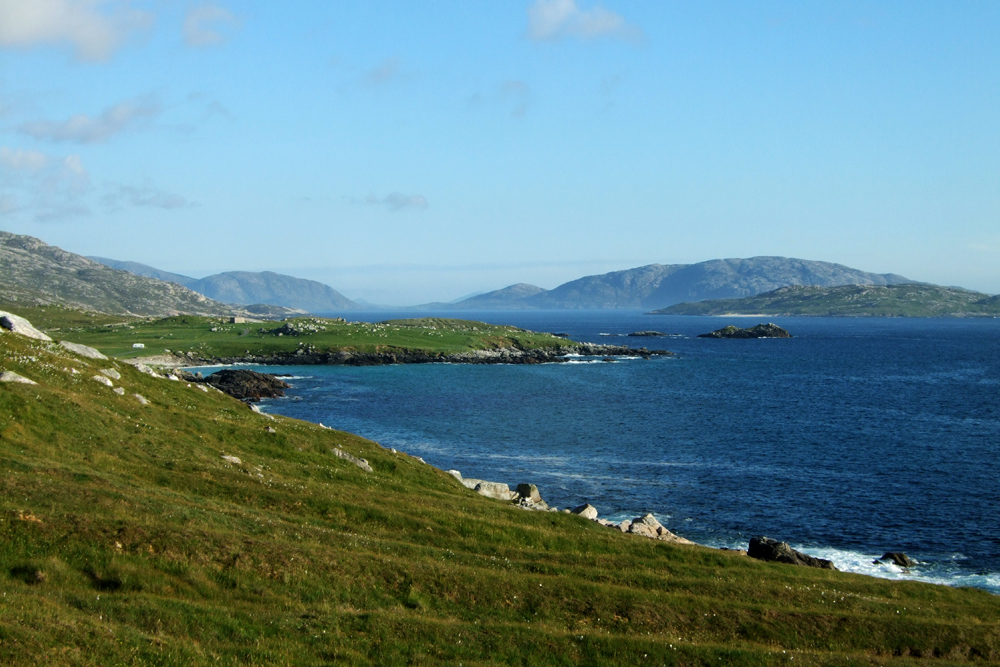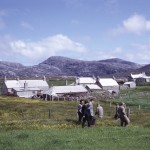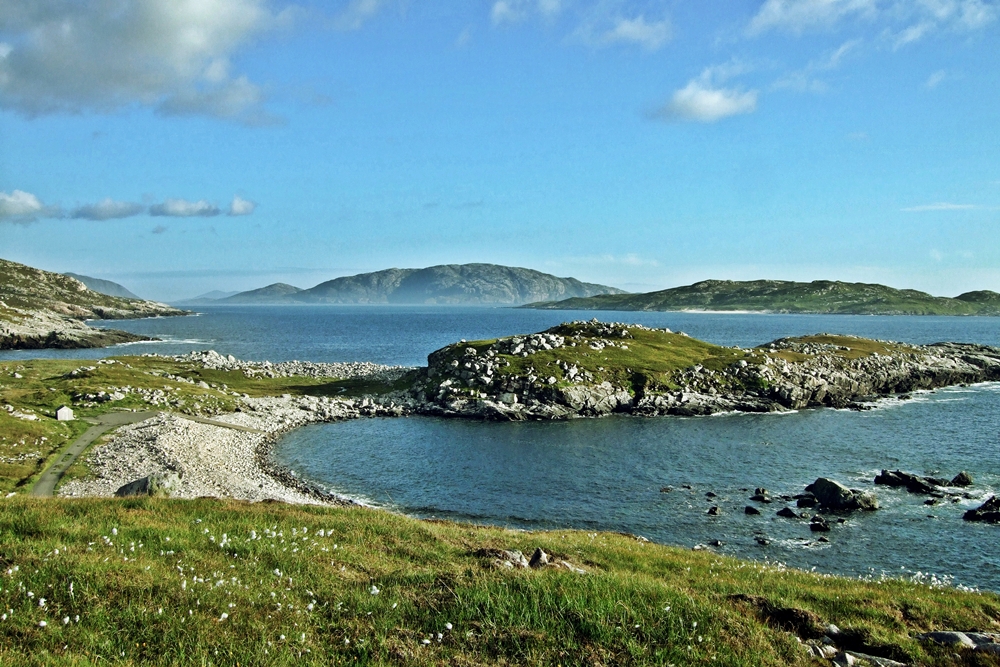Tag: mealista
Mealista v. Ardroil
By long and solid tradition in Uig, the spot where the Uig Chessmen were found in 1831 is held to be the Bealach Ban, a hollow in the dunes in Ardroil. In November of last year, a paper by Dr David Caldwell et al in Mediæval Archaeology proposed that, on the evidence of the Ordnance Survey Place Names book compiled by contractors from local information in the 1850s, the findspot may have been a few miles away at Mealista. Anna Mackinnon, Ardroil, wrote an initial response countering that suggestion and gives more evidence from the Place Names book here. This piece appeared earlier this month in the Uig News; thanks to Anna and the Uig News for the opportunity to republish it. Meanwhile Dr Caldwell will be speaking in Uig about the Chessmen on Thursday 4 March. Further detail will follow.
Over the last few weeks, I’ve been delving into the book of place names collected by the very first Ordnance Survey of the 1850s to find out for myself what’s actually there and to work out how much import can be given to the entry that states that the Chessmen were found in Mealista, in the ruins of Taigh nan Cailleachan Dubha. The Place Names book is easily accessible, on microfiche in the Stornoway Library.
I have to say that it’s an example of meticulous paperwork, a colossal amount of painstaking effort must have gone into its compilation but to the 21st century eye, it looks fussy and overdone. It’s handwritten and ruled out in column after column: place name; its correct spelling; any other known variation of the spelling; the location; the English “significance” i.e. translation of the name; the names of the person or persons who were the authorities for the information and of the Ordnance Survey Clerks who wrote it all down and, finally, a column for comments.
We used to be advised as students not to use it as a reliable source as the information was only as good as the knowledge of the informant and also, because its accuracy could have been compromised in translation. There’s a long time since I last looked at it and this time round, I found its main impact, apart from its painstaking “clerkery,” was the sheer volume of place names in the parish of Uig. Going through the pages nearer home, I felt as if I was meeting old friends as place names jumped out at me from the screen, names I used to hear in daily conversation, which are now rarely, if ever, aired.
I was also intrigued by the names of the local informants of the 1850s. I would really like to go back to it and list them all down to see how many can be identified with the help of the census returns. I found my great, great grandfather, Murdo Macleod, Gisla, (Murchadh Ghioslaigh) and his neighbour and brother-in-law, John Macdonald, (Iain Laghach) reeling off names. That pinpoints the collecting of place names to before 1853 and the Gisla clearance, after which all the Laghach family but two ended up in Quebec.
From memory, I was sure that the Chessmen were noted in the pages relating to the Ardroil area although the name Ardroil wasn’t in use in its present form as early as the 1850s. The farm was known initially by variations of Eadar Dha Fhadhail, such as Ederol. The entry about Chessmen is there, under the place name “Bealach Ban.” It reads, “A glen on the south side of Camus Uig, it is composed of sand. A few years back a number of carved Ivory images of horses, sheep and other animals were found in this glen. Signifies white glen or pass.”
New Theories on the Uig Chessmen
The McVean Hoard
The Uig Landscape
The Uig POs and their Postmarks
Crofting at the Upper End, 1958-9
Breanish and Islivig in 1959
Norman Morrison’s Testimony
On 4 June 1883 the Napier Commission, chaired by Lord Napier, was in Miavaig to take evidence from crofters and others on issues surround land management and tenancy. Among those interviewed was Norman Morrison, crofter and fisherman at Brenish, aged 61, who stated he had two milk cows, three young beasts, between fifteen and twenty sheep, and no horse, on a croft which he shared with his brother, who kept similar stock. The following is slightly abridged.
Have you been fairly elected a delgate by the people of Brenish? Yes
How many people were present when you were elected? All the male population of the town.
Have you any statement to make on behalf of the people? I would say, in the first place, that they are crowded so much together that they have no way of living. Our places were crowded first when the neighbouring township of Mealista was cleared [in 1838]. Six families of that township were thrown in among us; the rest were hounded away to Australia and America, and I think I hear the cry of the children till this day. There were others came from various townships since at different times as these were being cleared, and I instance various examples – one from one place and one from another – and not one was placed in among us in that way, but accommodation was provided for him by subdividing the lots that were in the place. We were deprived of the old rights of the township moorland pasture. The half of the island of Mealista belong in the time of my grandfather to our township and a neighbouring township – we were deprived of that. We got no abatement of rent when we were deprived of that but when Cameron lotted out the township the rent was increased by £30.
As you are sixty-one years of age, can you perhaps remember how many families there were in Brenish before the township was cleared and the people taken to Brenish? Between twelve and sixteen.
How many are there now? Forty-three.
How many of those are crofters paying rent to the proprietor? There are twenty-nine names on the rent roll.
And the rest are cottars? There are some of them who pay from 5s to 10s.
Then the number of the families has increased from sixteen to forty-three. How many of that number do you think have come in from the outside and how many are the natural increase of the place? Seven came from the outside. We also consider we have a grievance with respect to the herd of the march. It is fourteen years since a herd was set apart for ourselves and the neighbouring tacksman, and we are quite willing to pay the half of the wages of that shepherd, but we have always had the idea that the neighbouring tacksman marching with us ought to pay the other half. We are also complaining about the dyke that was build about thirty-four years ago. It was built in the time of the destitution, and the people were paid for the building of it by so much Indian meal. Four shillings or five shillings additional rent was placed upone every one that was on the rent roll at that date for this dyke, and we were under the impression that when the expense of putting up the fence was paid this 4s or 5s would be taken away.
Wild Murdoch of Mealista Island
Mealista Island (on the right) from above Molinish, with Scarp in the distance.
From “Various Superstitions in the North-West Highlands and Islands of Scotland, Especially in Relation to Lunacy” by Arthur Mitchell AM MD, Deputy Commissioner for Lunacy in Scotland, Corresponding Member of the Society of Antiquaries of Scotland. From the Proceedings of the Society of Antiquaries of Scotland, vol IV, published in Edinburgh in 1862. Excuse the non-pc approach:
There is a little island called Mealista, separated by a narrow seaway from the coast of Uig, without any permanent population, but to which, in former times, people resorted for the two or three summer months, to look after cows which they transported to it for the sake of pasturage. Tradition says of this island that no one was every born on it who was not from birth insane, or who did not become so before death. In the last generation, three persons had the misfortune for the first time to see the light of day on this unlucky spot, and all three were mad.¹ Of one of them, who is remembered by the name of Wild Murdoch, many strange stories are told. It is said that his friends used to tie a rope around his body, make it fast to the stern of the boat, and then pull out to sea, taking the wretched man in tow.²
The story goes that he was so buoyant that he could not sink; that they “tried to press him down in the water”; that he could swim with a stone fastened to him; that when carried to the rocky holms of Mealista or Grianan, round which the open Atlantic surges, and left there alone, he took to the water, and swam ashore; and that, when bound hand and foot and left in a kiln, by a miracle of strength he broke his bonds and escaped. It was thus they are said to have treated him during his fits of maniacal excitement; and there are many still alive [in 1862] who saw it all, and gave a helping hand.
The Macleods of Pabbay and a Mealista Connection
Rental Paid in 1725
Uig Transport in the 1930s-40s
Àirigh Trail: Mealista
The Loss of the Margaret

On Saturday, 12 March, 1932, a north westerly gale was blowing and a heavy Atlantic swell was running. When Angus MacKinnon, skipper of the lobster boat, Margaret, saw the inclement weather conditions, he woke his father, Cain, and requested his assistance as an extra hand on the boat. Though retired from fishing, Cain agreed. Angus’s younger brother Calum was also a crew member, but his father decided that he should not accompany them.
At daybreak on that fateful morning, two Brenish boats were launched at Molinish. Strong arms and robust backs were required to haul the boats down the shingle beach and out into the Atlantic swell. With their sails unfurled, one boat headed for the lobster pots they had set opposite Brenish while the Margaret headed in the opposite direction to their pots behind Eilean Mealista.
The Margaret was seen dipping in the heavy swell and about to round Eilean Mealista but was never seen intact again. Paradoxically, the bad weather only lasted for a couple of hours and the rest of the day was calm.



